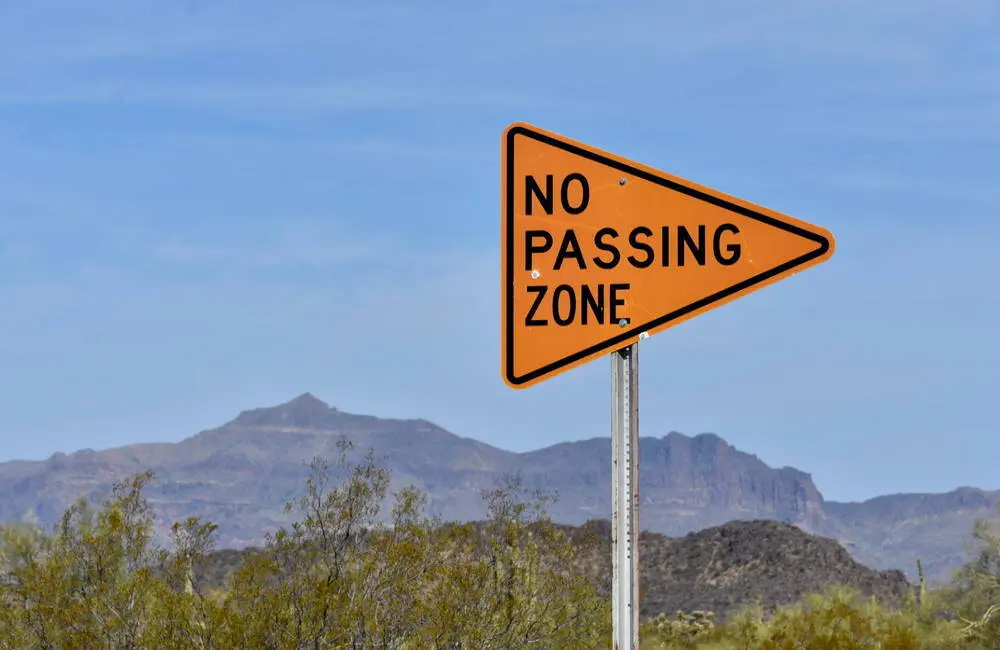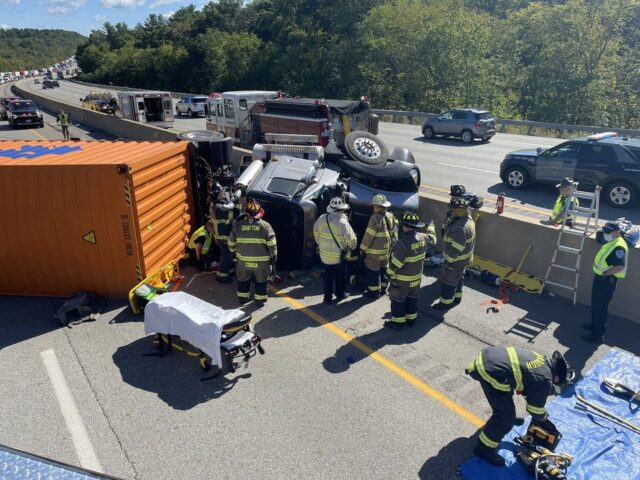
Sharing the road with 18-wheelers can be pretty daunting, especially when you’re passing them. While it may seem to car drivers that truck drivers rule the road, 72% of accidents between passenger vehicles and 18-wheelers are caused by car drivers. This is because many drivers don’t understand the extra caution required to drive safely near large trucks. Luckily, we at Cesar Ornelas Law are here to provide all of the 18-wheeler safety information you need to avoid accidents and become a more considerate driver overall.
1. Stay Alert
You should be alert at all times when driving, but sharing the road with an 18-wheeler demands some extra awareness and caution. Large trucks are prone to tire blowouts, sending debris behind them and drifting (being pushed around by the wind). If you’re passing an 18-wheeler, you’ll need to pay attention to avoid an accident should the trailer drift into your lane or the tire blow out.
It’s also wise to take note of which lane a large truck is in and how you’ll pass it long before you actually reach the vehicle. Trucks typically stick to the middle lane to allow cars to pass them in the left lane. In addition, truck drivers often communicate with their lights to indicate whether it’s safe to merge in front of them or not. If you’re passing an 18-wheeler and need to merge in front of them, keep an eye out for a single flash of their lights, the go-ahead signal, or multiple flashes to warn you against merging.

2. Don’t Cut Off 18 Wheelers
Legally, 18-wheelers can weigh up to 40 tons, meaning there’s quite a bit of weight moving very quickly when a truck is driving on the highway. This also means that slowing down all of that weight takes much more force and time than stopping a passenger vehicle. If you’re passing an 18-wheeler, it’s essential that you never cut them off by slowing down after merging in front of them. This could cause a potentially fatal collision if the truck driver can’t brake fast enough.
Similarly, you should never tailgate an 18-wheeler, even if you’re about to pass them. Not only will following too close behind a truck leave your vehicle vulnerable to flying debris, but it could also cause a serious accident. Colliding with the back end of a truck is even more dangerous than colliding with the front because your windshield will take the brunt of the collision instead of your bumper.
3. Allow Plenty Of Space
One of the best things you can do to drive safely around an 18-wheeler is to give them plenty of space, even when passing. Never drive right next to, in front of or behind a truck if possible, and always maintain a large gap between a truck and your vehicle. You should also give 18-wheelers the right of way if you’re in the position to do so — passing large trucks isn’t always the safest move, especially in traffic.

4. Pass Trucks Quickly
When passing an 18-wheeler it’s important to pass them as quickly as is safe. There are a couple of reasons you shouldn’t linger any longer than necessary next to a large truck, including:
- All 18-wheelers have a large blind spot along the side of the trailer, which means the driver can’t see you if you’re driving right next to them and may change lanes.
- Tire blowouts and flying debris are most dangerous to vehicles directly next to the trailer.
- In windy conditions, the trailer could drift into your passing lane.
To safely avoid truck accidents while passing, stay as far away from the truck as possible, drive quickly and keep the blind spot in mind. A good rule of thumb is that, if you can’t see the driver’s face, they can’t see your vehicle.
If you’ve been in a wreck with a truck, call on the 18-wheeler accident attorneys at Cesar Ornelas Law. Contact us today for a free case review.
5. Understand the Blind Spots
Nestled behind the wheel of an enormous 18-wheeler, the truck driver has significant blind spots, often referred to as “No-Zones.” These areas, extending down both sides, in front of, and behind the truck, pose a significant danger to other vehicles. As such, one should make every effort to avoid lingering in these zones. When you find yourself in these blind spots, remember the rule of thumb: if you can’t see the truck driver in the truck’s mirror, it’s highly likely the driver can’t see you either. By staying visible, you help truck drivers make safer decisions on the road.

6. Use Indicators Early
A crucial aspect of road safety is clear and early communication of your intentions to other drivers. This principle is especially critical when navigating around large vehicles like 18-wheelers. Always remember to engage your turn signals well before you intend to pass. By signaling your intentions in advance, you provide the truck driver with much-needed time to assess the situation and respond accordingly. This anticipation and communication help to maintain the flow of traffic and reduce the risk of sudden braking or swerving.
7. Pass on the Left
A golden rule of thumb for highway driving is always to pass other vehicles on the left, and this rule is doubly important when dealing with 18-wheelers. The left side of a truck offers the driver better visibility compared to the right side. By passing on the left, you ensure that you’re seen by the truck driver, thus reducing the risk of a dangerous situation. Avoid passing on the right side when possible, as this not only hampers visibility but also exposes you to road debris which the truck’s tires may kick up. By following this guideline, you prioritize safety and facilitate smoother traffic flow.









